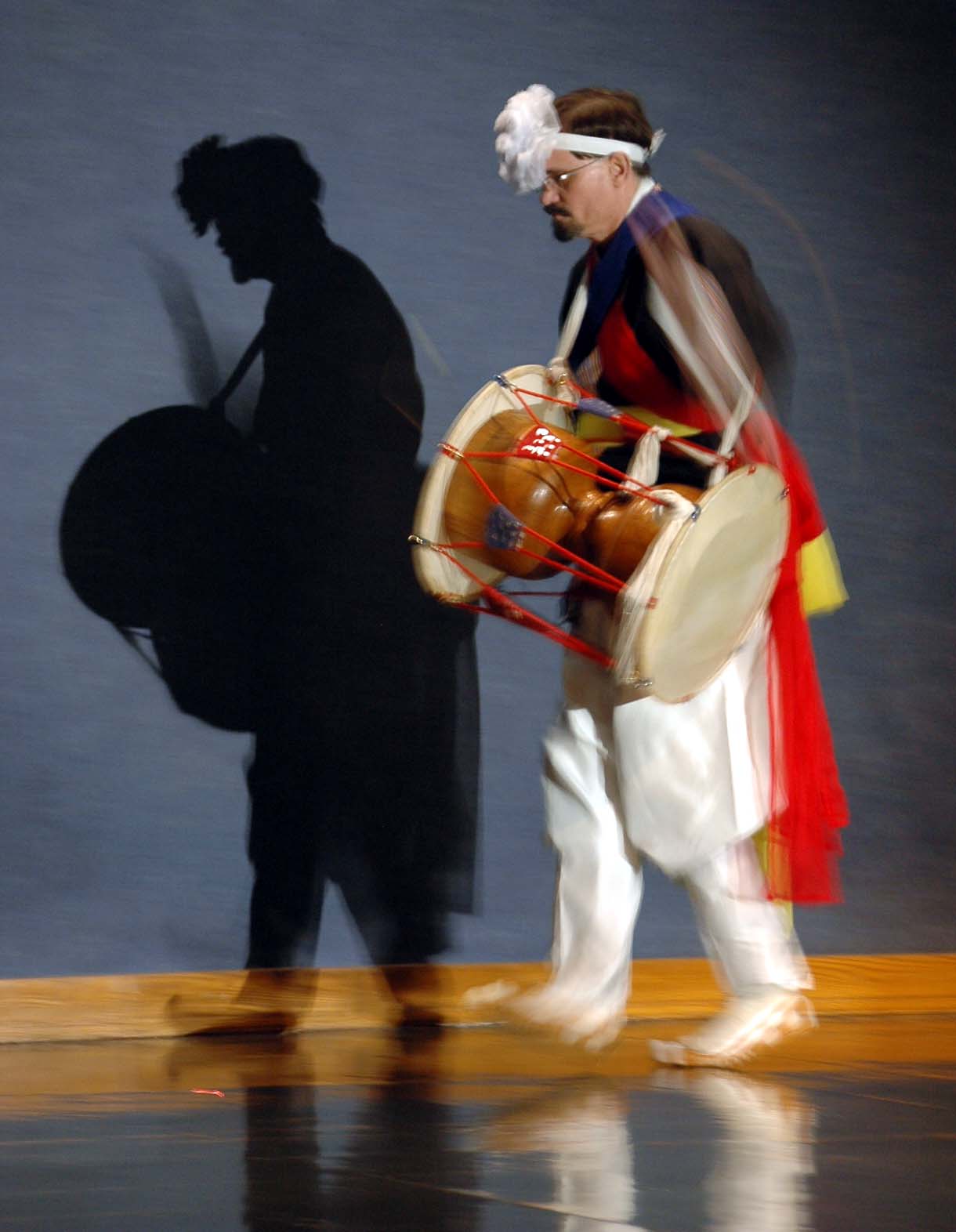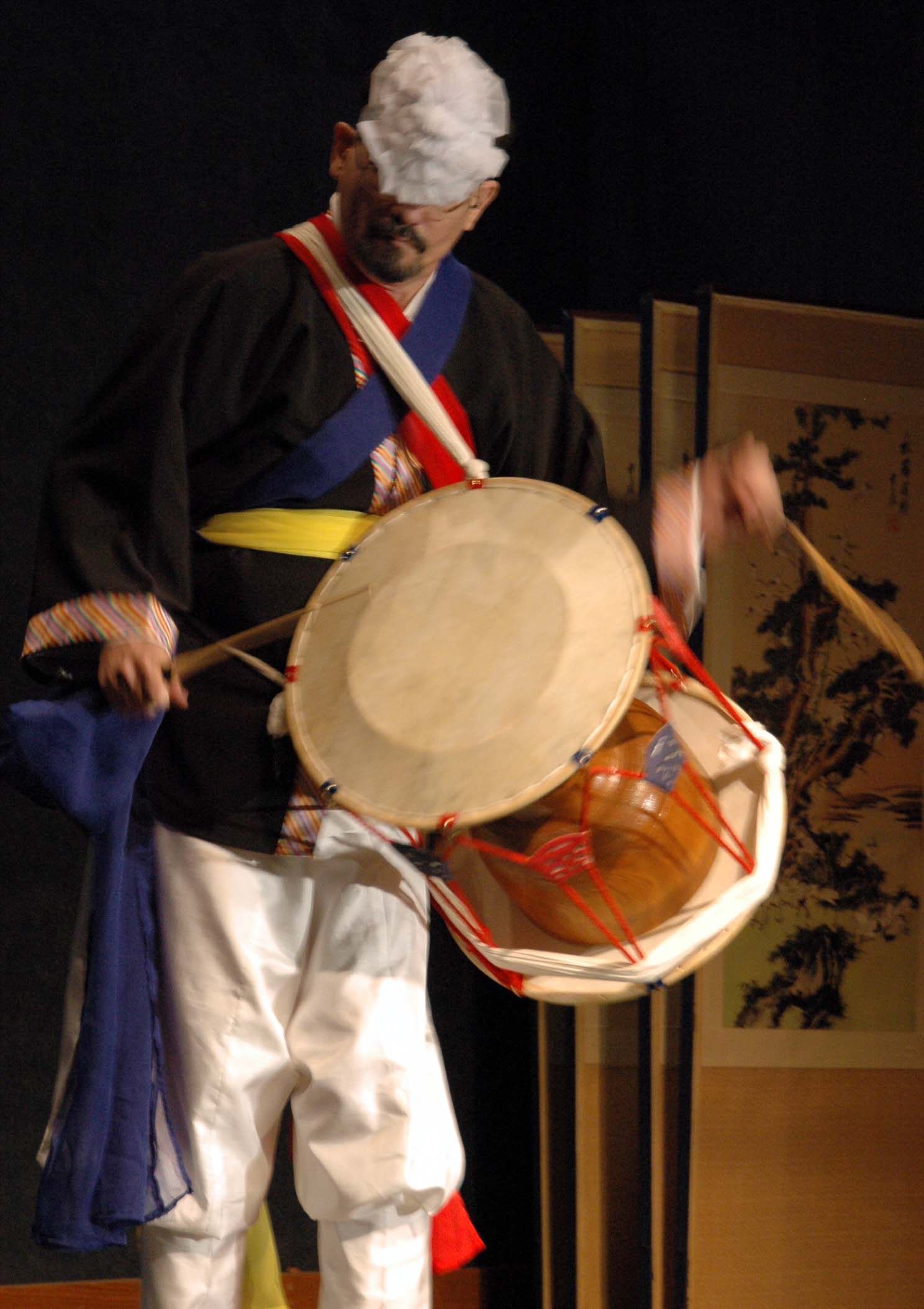 Personal
Background for Interest in Spirituality and Social Work
Personal
Background for Interest in Spirituality and Social Work
Sometimes it is
helpful for people to know about the personal influences
on a person's professional work, in order to indicate
factors that shape (and possibly limit)
her or his perspective on
research, teaching, and other activities. So I would
like to briefly
introduce my personal background.
I grew up in Parma,
a suburb of Cleveland that at the time was
inhabited
by many families of recent central and eastern European
descent. My Czech-American parents raised me and my four
siblings in a devout Catholic home. For
us, spirituality meant more
Ed Canda
hard at work at the
than just going to church on Sundays- it was
(and is) a daily way of life. Philosophical
Issues in Social Work I was educated in Catholic
elementary and high schools. From a very
Study Group retreat, Vermont, 2000.
early age I became especially interested
in the lives of saints and
Photo courtesy of Susan Robbins
contemplatives. Also, by 4th grade, I became
keenly interested in science, especially human
paleontology. So I began trying to figure out how
the insights of science and religion could be integrated in understanding
the nature of reality and the meaning of life.
By late elementary school,
I taught myself meditation techniques that drew on Catholic contemplative
prayer and relaxation techniques. I continued to explore a variety
of spiritual disciplines and philosophies through my college years.
Also, during high school (1968-1972), the years of the Vietnam
War and civil rights movement, I became strongly concerned about
issues of peace and justice. During high school and college (1972-1976)
years, I did occasional social service volunteer work and got
involved with student activism and government. Writings of the
Catholic monk, Thomas Merton, were very helpful to me then. Zen
Buddhism and shamanism were major interests.
While at Kent State
University, I majored in cultural anthropology, focusing on anthropology
of religions, art and art history, and interdisciplinary studies.
To my surprise, I was invited to go to South Korea as an exchange
student, sponsored by Kent State University, the Korean host institution
(Sung Kyun Kwan University in Seoul), and the Fulbright Program.
As soon as I graduated, I went to Korea where for 15 months
(1976-1977) I studied Korean history, philosophy, culture, art,
percussion, and religions. I focused on Buddhism, Confucianism,
and shamanism. To my great fortune, I met Hwi-Ja, whom I later
married. This connection with East Asia and Korean studies gave
me a much deeper and broader understanding of spiritual and cultural
diversity, which has enriched my life tremendously.
At the University of
Denver (1977-79) I completed an M.A. in Religious Studies, focusing
on East Asian religions and comparative religions. Then, out of
a desire to integrate my interests in religious studies and social
service, I changed to the field of social work. I obtained MSW
and Ph.D. degrees at The Ohio State University (1980-1986) with
a focus of study and practice on cross-cultural and spiritual
issues. Much of my social work practice related to Southeast Asian
refugee resettlement and transcultural families.
This personal and academic
foundation allowed me to pursue connections between cultural diversity,
spirituality, and social work throughout my career. My wife and
I are Catholic both in the sense of institutional membership and
in the sense of universal respect for diverse spiritual ways.
Since 1989, we have been affiliated with the Catholic House of
Orayer, Shantivanam, in Eastern Kansas. I have also been a member of the Kwan Um School of Zen, which
is a non-exclusive international organization that promotes Zen
style meditation. Hwi-Ja and I have been blessed with great friends
and generous teachers from many spiritual traditions, East and
West.
 In my personal life
and professional work, I have seen the extensive benefits that
religions and spiritual practices can confer. I have also seen
the personal and societal damages that result from misuse of religion
and spirituality.
So I am committed to promoting ways that people of diverse religious
and non-religious spiritual perspectives can understand each other
and cooperate in order to encourage peace and justice for all
people and all beings.
In my personal life
and professional work, I have seen the extensive benefits that
religions and spiritual practices can confer. I have also seen
the personal and societal damages that result from misuse of religion
and spirituality.
So I am committed to promoting ways that people of diverse religious
and non-religious spiritual perspectives can understand each other
and cooperate in order to encourage peace and justice for all
people and all beings.
Stone
Pagodas
I enjoy creating
stone towers in a style influenced by a Korean tradition of building
pagodas (suhk-tahp) by balancing natural stones into towers and
surrealistic shapes. My stone pagodas are at my home
and friends' homes as well as some retreat centers. For more information
about creating stone pagodas, you may access my on-line
article about this subject.
A
stone pagoda in
my
home garden.
Meditative
Percussion
In 1976-77, while
a student in Korea, I had the excellent opportunity to study performance of traditional Korean drums and
gongs in the style known as nong-ak (agricultural music). Over
the years, I have developed a style of
performance influenced by nong-ak, as well as cross-cultural
studies of music
in healing rituals, meditation, and therapeutic aspects
of group dynamics. If you are interested to learn more about nong-ak, see
my article: Canda, E. R.(1993). Gripped by the drum:
The Korean tradition of nongak.
Shaman’s Drum, (Fall/Winter), 18-23.


Ed Canda playing the Korean
hourglass drum (changgo) at Korean culture celebration,
University of Kansas, July 2008.
Photos courtesy of Helen Ko.